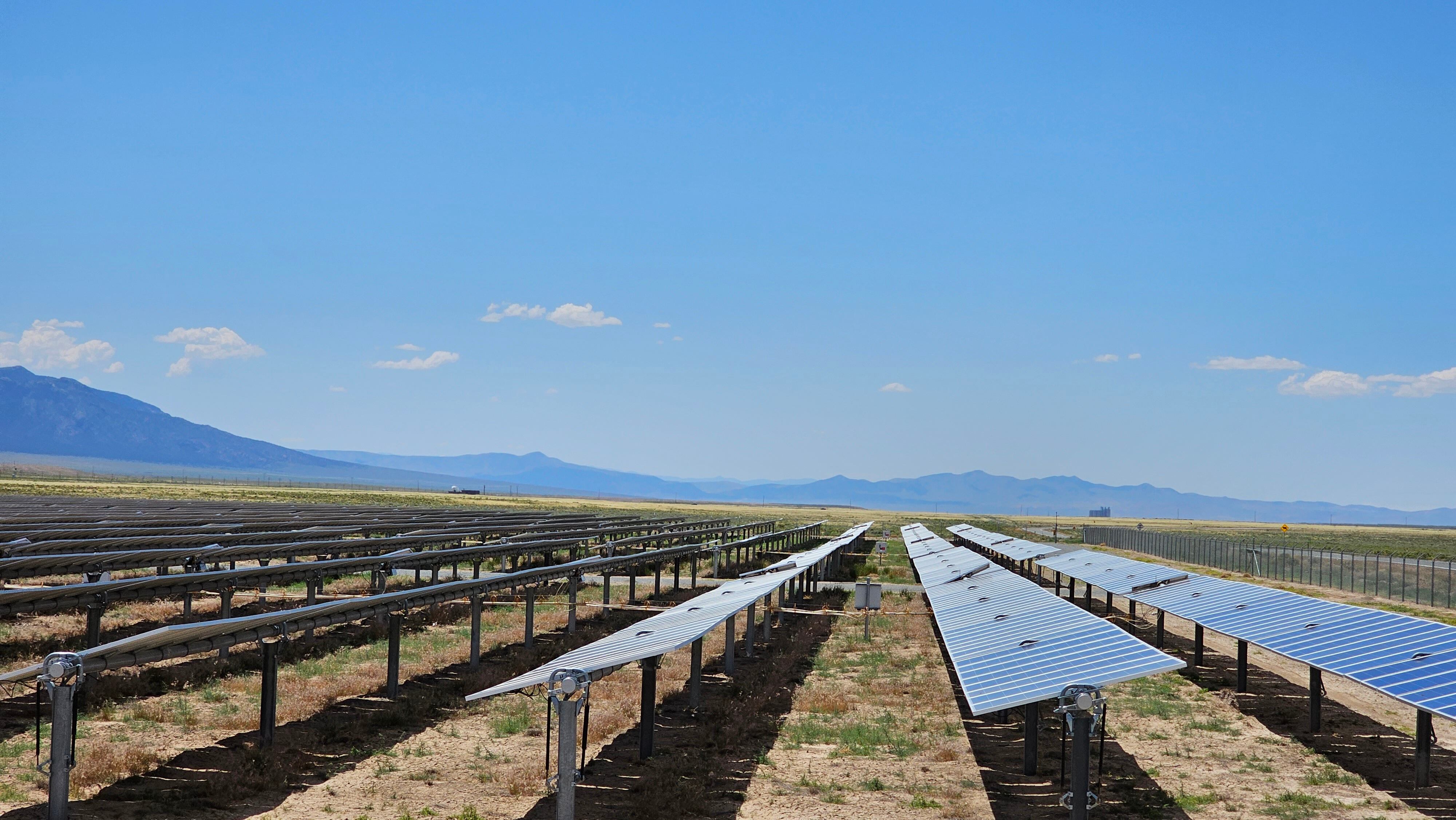Greater access to trust lands means greater opportunity for Utah students
Our nation’s early leaders believed that a strong democracy is founded upon a well-educated public. As each new state entered the Union, these leaders proposed that land be set aside to support public education. This is what we call trust lands. When Utah achieved statehood in 1896, the state received trust lands that today contribute 96% of their revenue to public education.
Utah’s trust lands, managed by the School and Institutional Trust Lands Administration (Trust Lands Administration), generates substantial revenue that directly benefits public education here in Utah. This model is at risk due to a new Public Lands Rule from the Bureau of Land Management (BLM) and road closures on BLM lands that could restrict access to these trust lands.

(Frank Mueller, Utah Department of Natural Resources) | Milford-Green Energy Corridor
The Trust Lands Administration’s mission to manage trust lands to generate revenue for public schools and other institutions is executed through various means, including leasing lands for mining, oil and gas production, and renewable energy projects. Last fiscal year alone, mining leases and permits generated over $8.8 million, oil and gas leases brought in over $41.5 million, and renewable energy leases added approximately $1.3 million to the revenue pool. These funds are essential for enhancing the quality of education in Utah, supporting everything from hiring para educators to help teachers, to classroom resources, and laptops for students.
The Trust Lands Administration’s management practices are not solely revenue-driven. The Trust Lands Administration is also committed to land restoration and conservation efforts, incorporating sustainable practices such as grazing, protection of cultural resources, aspen regeneration to improve watershed health, and wildfire rehabilitation. To date, the Trust Lands Administration has preserved and/or protected over 560,000 acres of Utah land.
Trust lands are often surrounded by BLM lands, making the Trust Lands Administration’s mandate to monetize them difficult by the BLM’s Public Lands Rule through potentially restrictive restoration and mitigation leases. These leases will prove to be a barrier to fully realizing the potential of these trust lands. By restricting access to these parcels, the Trust Lands Administration’s ability to manage and lease these lands effectively is hampered. For instance, during the Gemini/Labyrinth Travel Management Plan process, the Trust Lands Administration’s request to access two trust land blocks was denied. Restricting access directly translates to lost opportunities for generating revenue that could have funded educational programs.

(Frank Mueller, Utah Department of Natural Resources) |Milford Area- Fervo EGS Geothermal Drill seen from Forge.
The issue at hand is a disconnect at the federal level that directly impacts our communities. Trust lands trapped by surrounding BLM land are effectively rendered inaccessible, hampering efforts to manage them productively. This situation is untenable. It is imperative that the state be allowed access to these lands, ensuring that the Trust Lands Administration can continue to fulfill its mandate and provide for its beneficiaries.
Since 1994, the Trust Lands Administration has generated nearly $2 billion in revenue. Utah’s education system cannot afford to lose the crucial funding that trust lands provide. As we look toward a future where every child has access to quality education, it is essential to recognize and protect the very mechanisms that make this goal possible. The BLM’s Public Lands Rule, as it currently stands, threatens to dismantle a proven system of support. We must advocate for a balanced approach that allows for responsible land use and management while securing the financial future of our public schools.
Utah’s Trust Lands are not just parcels of land; they are integral to our public education funding. The federal government must acknowledge the importance of these lands and ensure that the Trust Lands Administration has the access necessary to manage them effectively.
source https://oto.oto-login.com/
Nhận xét
Đăng nhận xét